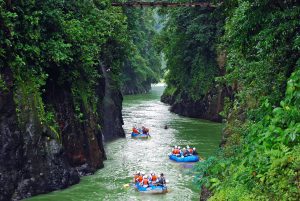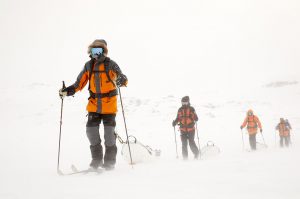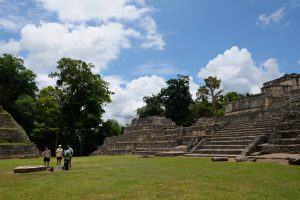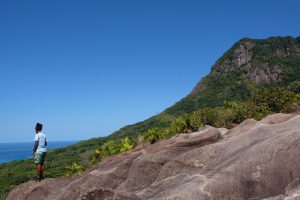
From a football match in Buenos Aires to the stone faces of Easter Island, our writers reveal what drew them to South America
View online at natgeotraveller.co.uk
At dawn, we wander out onto the ancient salt at as the sun bleaches the inky, star- flecked night into a watery sunrise. The land is scored into large hexagons, like tiles laid by gods, stretching in every direction to a misty frieze of jagged mountains
Borderlands have always held a certain fascination for me: to my mind, it’s at these under-explored margins that cultural and national binaries have the potential to crumble. Top of my wish list for over a decade had been the spectacular wilds of Bolivia’s southern boundary with Chile, and now here I am: speeding north through the Atacama Desert in a 4WD vehicle. What importance were abstract dotted lines negotiated in distant staterooms, I wonder, to local smallholders when these two countries were written into being 200 years ago? What’s life like along this rugged, liminal band of Earth today?
An answer sits in the front seat: my driver, Arturo, was born in the remote frontier town of Uyuni in Bolivia, but he identifies as Quechua — an indigenous tribe whose lineage runs back to the Incan empire. Quechua is his first language, and it’s what he uses to chat to the border guards when we pull up at a dilapidated train shed. Ominously, this is our portal to Bolivia: blood red, rusted tracks run in either direction through dust to empty horizons. Passports stamped, we bump across the rails and follow faint tyre tracks east.
We’re high — around 9,800ft above sea level — and we’re climbing higher, the air getting thinner and the light brighter. The amber desert’s final throes give way to lush plains of purple quinoa populated by grazing alpacas, and we plough on, finally pulling up to picnic beside a glassy lake dotted with flamingos.
That night, our group rests in a basic, family-run pension, sheltering from the cold winds that sweep unhindered across the nearby Salar de Uyuni. At dawn, we wander out onto this ancient salt at (at 4,086sq miles, the world’s largest) as the sun bleaches the inky, star- flecked night into a watery sunrise. The land is scored into large hexagons, like tiles laid by gods, stretching in every direction to a misty frieze of jagged peaks on the horizon. It’s soul quieting, otherworldly; a place that, I feel, could only exist far from prying eyes at the outermost limits of a country.
Published in the South America 2016 guide, distributed with the October 2016 issue of National Geographic Traveller (UK)











